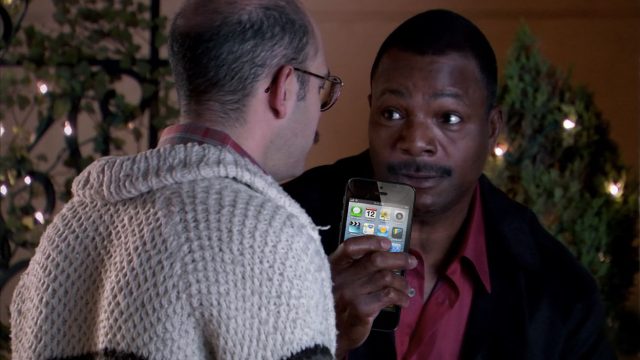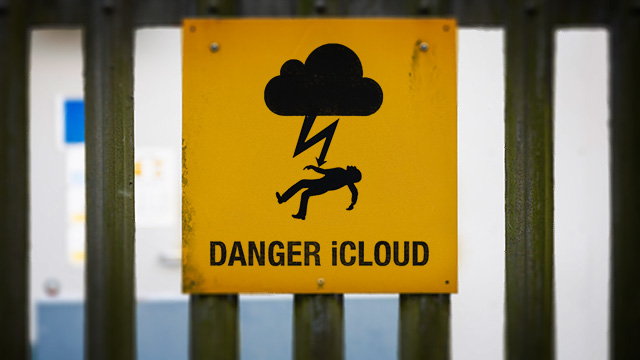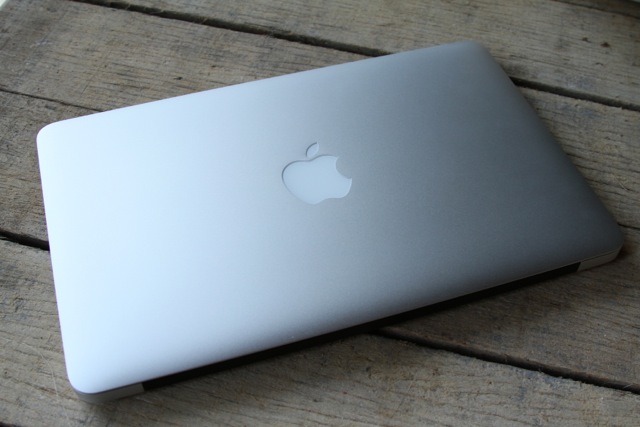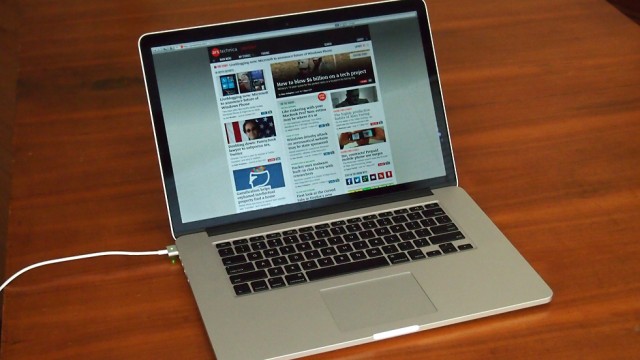
Apple's Worldwide Developer Conference (WWDC) is right around the corner, and the company's opening keynote on June 10 will be its first public event in months. The dry spell hasn't stopped the rumor mill from churning—if anything, the absence of actual news has only fueled the speculation about the company's plans. Apple watchers are looking for something big, and even if you only subscribe to the most plausible rumors it looks like they're going to get it.
We've followed these rumors as they've unfolded, taking note of which ones seem likely based on Apple's public statements (and the company's past behavior). What follows is a list of what we think Apple is going to talk about on Monday—even if Apple doesn't have any big surprises up its sleeve, it looks like it will be a busy keynote.
iOS 7
The next version of Apple's mobile operating system is expected to take center stage at the keynote, and for good reason: it will be the first version of iOS developed under software engineering senior vice president Craig Federighi and design chief Jony Ive in the wake of Scott Forstall's departure last year.
It's speculated that Ive's influence will result in a visual overhaul of the operating system. It is believed that, under his guidance, iOS 7 will lose many of the textures and UI-elements-that-look-like-physical-objects in favor of something flatter and more subtle. Apple's recently-released WWDC app for conference attendees is thought to give a preview of what the redesign will look like: fewer shiny buttons and more flat colors, but functionally similar to current iOS apps.
What we've heard a little less about are the functional changes that iOS 7 will bring. Tim Cook's comments at the recent All Things D conference implied that Apple may be loosening a few of its tight restrictions on third-party apps, giving developers access to APIs that will allow them to integrate a little more deeply with OS. Don't expect iOS to become as flexible as Android—Cook thinks that many of Apple's customers entrust the company "to make certain choices on their behalf." But we're hoping that third-party applications will be allowed to replace some of Apple's default apps, and that third-party applications will be able to share data among themselves more easily than is currently possible.
OS X 10.9

During Apple's surprise PR blitz for Mountain Lion last February, the company said it would be releasing OS X on a yearly cycle from that point on, so we'll almost certainly get some news about OS X 10.9 at WWDC. We haven't heard much about the next version of OS X, except for vague rumors that it will be focused on "power users."
These rumors suggest that OS X 10.9 will introduce a new, iOS-like task switcher, as well as iOS-esque application pausing to free up system resources for other applications. Other rumored features include a redesigned, tabbed Finder, a new Safari with an overhauled backend, and improved multi-monitor support for Spaces. (Since the current level of multi-monitor support is "none," that last one should be easy.). Some older rumors also suggest that Siri and the Apple Maps APIs will also be making their way over from iOS.
If iOS gets the design overhaul that everyone is expecting, some of that work will inevitably be carried over to OS X. Apps like Notes, Calendar, and Contacts in OS X mirror their iOS counterparts visually, so if the iOS versions of those apps get a fresh coat of paint the OS X versions probably will too. Other visual changes are possible (reading John Siracusa's OS X reviews in order will show you just how the OS's look has shifted from release-to-release), but OS X is already pretty flat and understated in its UI design—I wouldn't expect anything as drastic as what is reportedly in store for iOS 7.
iRadio
There are a few Apple rumors that just refuse to die, no matter how many years old they are. Rumor sites and clueless analysts love to invent things like the "Apple television set" and "low-cost iPhone" and then treat them as facts, grabbing on to the smallest shreds of evidence and hanging on for dear life.
One of those perennial rumors is Apple's streaming music service, most frequently referred to as "iRadio." The earliest versions of these rumors, which claim that Apple is working on a subscription-based iTunes service to rival Spotify or Rdio, reach all the way back to 2007. More recent reports from October 2012 and earlier this month suggest that Apple is still working out agreements with the music labels to make this happen.
If Apple plans to do this at all, the sooner they introduce it the better. The aforementioned Spotify and Rdio are already entrenched, and Google just announced its own subscription music service last month in Google Play Music All Access. Hopefully Apple can leverage the power of its brand to give iTunes users the same sort of deal.
iCloud, Maps, and other services

The rumor mill tends to be at its most accurate when it's talking about hardware, which produces components and part numbers that occasionally leak from somewhere in Apple's supply chain. Software is also relatively easy to trace, since it can leave server records and blurry screenshots in its wake.
What you don't hear much about are Apple's back-end services, but don't expect Apple to remain silent on this topic. iCloud and its associated services is the glue that binds iOS, OS X, and many first- and third-party applications together these days, and given the keynote's intended audience you can bet that Apple will talk up any improvements that it's making.
In particular, we hope to see improvements to the way iCloud works with third-party apps. Developers have a number of complaints about the service's reliability and consistency, as we reported earlier this year. We'd also love to see the service become more flexible—if I want to edit documents from TextEdit in some other iCloud-compatible text editor on iOS or OS X, I should be able to.
We'd also expect Apple to spend some time talking about improvements to its Maps data, something which may come up in the iOS 7 discussion. Public reception to Apple's Maps app upon its release was negative enough to prompt the firing of the product manager responsible and a rare apology from Tim Cook; we'd be surprised if Apple didn't at least take the time to talk up the amount of effort it has put into improving both the mapping data and the app itself.
The MacBook Air

Apple introduced the 2012 MacBook Airs, the 2012 MacBook Pros, and the very first Retina MacBook Pro almost exactly a year ago at last year's WWDC, and it's entirely possible that we'll get a repeat performance this year. Intel has just announced a whole gaggle of mobile quad- and dual-core CPUs ideally suited to new MacBooks, and the PC OEMs are already talking up hardware that uses the new chips.
Let's start with the MacBook Air, since tightening supplies indicate that the current models are the most likely to be replaced. I wouldn't expect new Airs to look drastically different from the current ones—even if the design is tweaked, there's not a lot of extra fat to trim out. The new Haswell-based CPUs should increase GPU performance a decent amount over the HD 4000 GPU in the current models, though depending on which particular chip the computers use, the CPU performance might not be drastically different. Haswell should also make for improved battery life over the 2012 models, assuming the battery sizes (and other specs) are similar.
Haswell might also make it possible for Apple to cram a Retina display into the MacBook Air without tanking battery life or making the machine larger or heavier. However, I wouldn't bet on them this time around—cost is definitely a factor, but I also think Apple will continue to use the Retina display to differentiate the Pro line from the Airs for at least another year.
As for other upgrades, the Airs will probably miss Thunderbolt 2, but 802.11ac Wi-Fi seems like a safe bet. We'd love to see at least 128GB SSDs and 8GB of RAM to come standard on all models, given that SSD prices keep falling and RAM prices have been low for a while.
The Retina (and non-Retina) MacBook Pro

The 15-inch Retina MacBook Pro has been around for almost a year, and it's about due for a Haswell-flavored refresh (like the Air, supplies are also reportedly constrained). The 13-inch model is only eight months old, but Apple isn't afraid to break its own refresh cycles every now and again. The fact that the 13-inch version uses integrated graphics would make Haswell's advancements even more welcome.
The question for the 15-inch model in particular is about the GPU it would use. Apple could continue in its current course and simply switch out the Nvidia GeForce GT 650M GPU for the equivalent 700-series model, or it could switch to an AMD mobile GPU instead (it has been known to switch between the two from generation, perhaps to keep both companies vying for its business). However, Haswell opens up an interesting possibility: ditching the dedicated GPU entirely and using one of Intel's Iris GPUs instead.
Now, AnandTech's characteristically thorough benchmarks of Iris show that it falls a bit short of the GeForce GT 650M most of the time, sometimes by as much as a third. However, the power savings that are made possible by removing the dedicated GPU from the laptop's motherboard would be significant, and we saw in the 2011 MacBook Air (when Apple switched from Nvidia's integrated graphics back to Intel's) that the company is willing to give up some graphics performance to serve other ends—Apple could either boost battery life or retain similar battery life while shrinking the chassis.
In any case, like the Air, the theoretical new Retina MacBooks would probably be too early for the Thunderbolt 2 party, but just in time for the 802.11ac party.
As for the non-Retina MacBook Pros, Apple could go one of three ways with them: it could keep the current models and continue to sell them unchanged, iPod Classic-style; it could do what it did last year, and quietly put Haswell parts into the same old chassis; or it could discontinue the model entirely and lower the price of the Retina MacBook Pros to compensate. None of these three outcomes really strikes me as more or less plausible than the others, but note that these are the only laptops Apple still sells that use a spinning HDD by default. Aside from the Mac Pro, they're also the only computers Apple sells that still include an optical drive. Myself, I don't think they're long for this world.
The Mac Pro

You poor Mac Pro lovers out there are much more patient than I am. If you haven't already cut bait and moved to an iMac or a competing workstation, you've been waiting since August 2010 for a true update to your computer (not counting the cop-out minor CPU refresh the system got at WWDC last year). You've got some reasons to be hopeful, though: Tim Cook himself said that something "really great" was in the pipeline for Mac Pro customers this year. As with the MacBook Air, supplies of the current model appear to be constrained. Maybe this year is your year!
That said, we know basically nothing about what a new Mac Pro might look like. We know the chassis is ripe for a redesign—the current tower is externally very similar to the Power Mac G5, which is approaching its tenth birthday as of this writing. We also know that Intel, AMD, and Nvidia have all introduced new CPUs and GPUs that would be a substantial step up over the generations-old silicon in the current models (Intel's Ivy Bridge-E Xeon processors, due in September, seem like prime candidates).
To really keep pros happy, any design overhaul would probably need to support most of the current Pro's expandability features: ample RAM slots, upgradeable dedicated graphics cards, loads of CPU cores, and drive bays a-plenty. Anything else runs the risk of being the Final Cut Pro X of computers.
We'll see you at the show!
Do you see something we've missed? Do you think we're way off the mark on anything? Fight it out in the comments, and sit tight—Editor at Large Jacqui Cheng will be on the ground on Monday to liveblog the show for you, and we'll be sure to separate fact from fiction in our coverage during and after the keynote.

reader comments
79